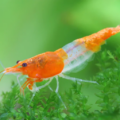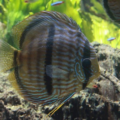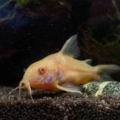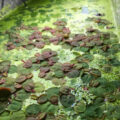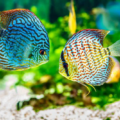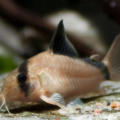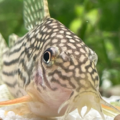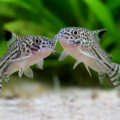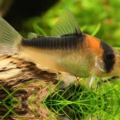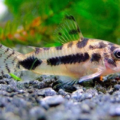Give your aquarium a some color with the Gold Laser Cory, a schooling bottom-dweller famous for its golden appearance, cheerful personality, substrate cleaning efficiency, and low maintenance.
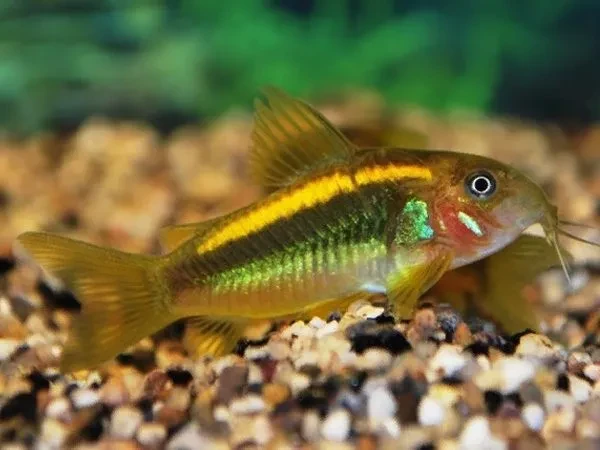
Introduction
Would you like to improve your aquarium’s flare with a visually striking bottom-dweller? Then, this unique bottom-feeder fish will interest you.
The Gold Laser Corydoras is a low-maintenance schooling species with a distinct golden striped appearance, peaceful temperament, and love for scavenging.
Their feeding and living habits make this species the best freshwater community fish for cleaning tank substrates. Because of their self-reliance, even beginner aquarists can handle Corydoras sp. CW101 care like pros.
So, let’s start this Gold Laser Corydoras introduction with identification tips.
Author’s Note: Check out the 14 Types of Corydoras Catfish: A Guide to Hardy and Playful Freshwater Fish for our favorite Corydoras picks!
Identifying the Gold Laser Corydoras
Gold Laser Corydoras are typically small at 2.5 – 3 inches (6 – 7.5 cm) long when mature with short and stocky bodies despite having a flat underbelly, perfect for laying at the bottom of their tanks.
Color Pattern
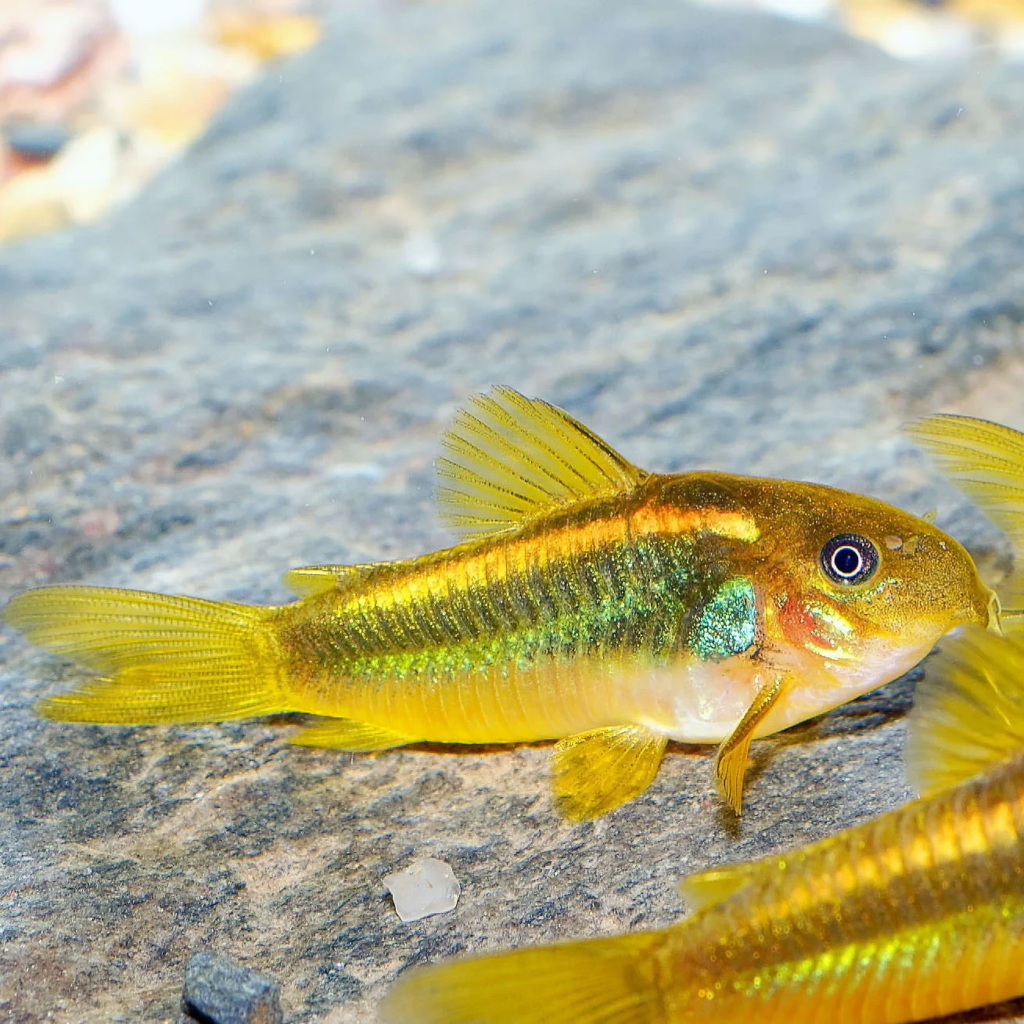
Gold Laser Corydoras have a deep brown, gray, or olive-green side with a single bold metallic golden-yellow stripe running from their head to their tail on the bottom sides and top of their body with orangish-yellow tints on the fins.
However, when you flip it over, their underbelly appears white or cream with no stripes. The vibrant horizontal stripe distinguishes the Gold Laser Corydoras and Green Laser Corydoras, which share every other feature.
Unique Traits
Like other Corydoras species, the Gold Laser variant loves spending time near the substrate and has a flat underbelly for a comfortable stay. But it doesn’t stop them from enjoying the company of other tank mates and actively swimming in groups throughout all of their tank.
Creating the Perfect Home: Tank Setup for Gold Laser Corydoras
Are you ready to design the ideal tank conditions for Gold Laser Corydoras to live a healthy and thriving life?
Tank Size
All freshwater fish tank setups should begin with properly sizing the enclosure. You must get a minimum tank size of 20 gallons to house a group of at least six Gold Laser Corydoras with similar-sized species.
Then, design a layout that resembles their natural South American habitat to ensure normal behaviors and stress-free interactions, read on and I’ll show you how.
Substrate & Decor
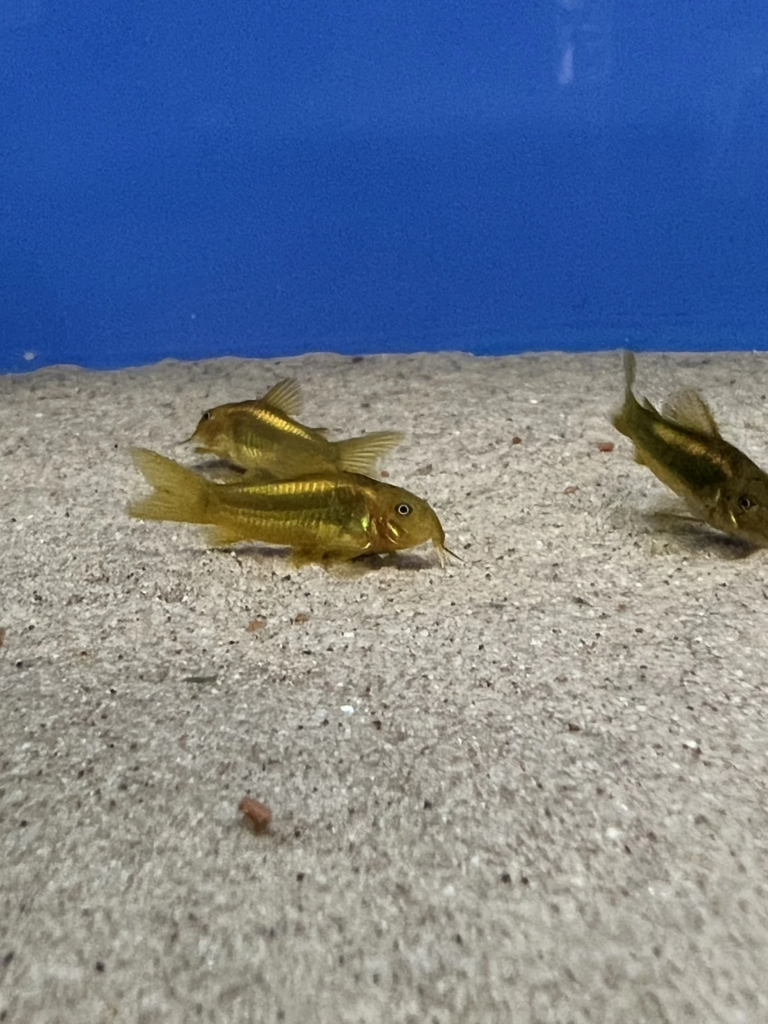
Fine sand is the best substrate for bottom-dwelling fish. It’s smooth and gentle without risking hurting your pets during feeding. Alternatively, you can use smooth, rounded gravel but never square/sharp-edged types of substrates.
Gold Laser Corydoras fish need hiding spots, shade, and interactive decor. So, add caves and live plants like Amazon Swords, Anubias, Frogbits, and Water Lettuce to create an Amazon Basin aesthetic.
Use only smooth rocks for safety, and add driftwood to release tannins and soften the water.
Water Parameters
Follow these specific parameters to ensure optimal conditions in the tank.
| Temperature | 72 – 79℉ |
| pH | 6.0 – 7.5 |
| Hardness | Soft to moderately hard |
Perform consistent water changes to keep it pristine. Remember without maintaining proper water parameters, the tank’s water quality can degrade, which can cause a wide range of issues from cloudy aquarium water to illness and mass die off.
Flow & Lighting
Because Gold Laser Corydoras are tiny, they need moderate water flow and sponge or single-canister filters to maintain oxygenation.
As nocturnal pets, this species thrives in dim led lighting that mimics their natural habitat, so use floating plants like frogbit to reduce the light’s reflection.
Author’s Note: Checkout the 17 Floating Aquarium Plants for Beginner Freshwater Aquarists for a few ideas on how floating plants can be used beautify and shade your aquariums!
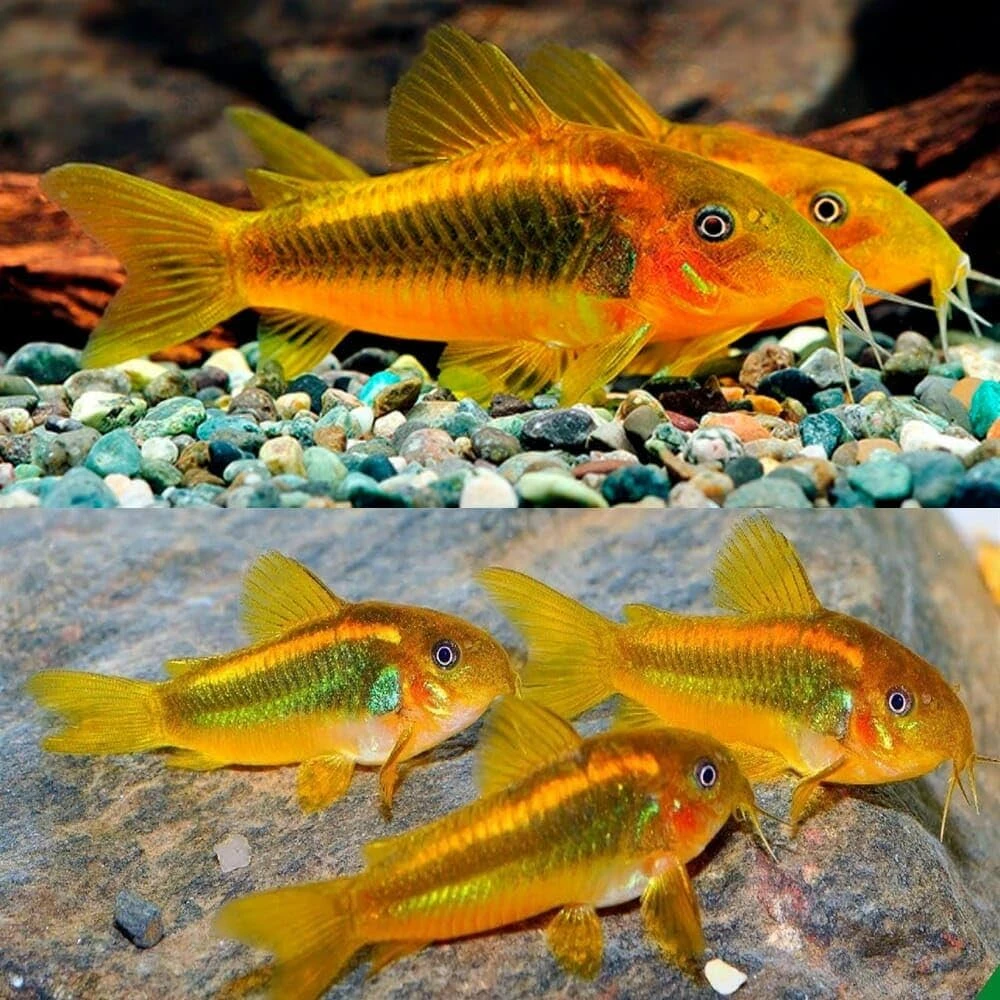
It’s time to discuss Gold Laser Corydoras’ schooling behavior and how you can manage it because it’s a non-negotiable lifestyle. Without 4 – 5 companions always, your pets will sink into depression from stress and sadness.
Since this is community tank fish in the next section we will discuss the best tank mates for bottom feeders as well as species you should avoid.
Schooling Requirement
As mentioned, Gold Laser Corydoras are happiest in groups because they enjoy synchronized swimming and interacting with other tank mates. Without these companions, they’ll feel lonely and miss the opportunity to express themselves fully. So be sure to pair Gold laser Corydoras in atleast a group of 5 companions. Other corydoras varieties are the easiest tankmates given all corydoras are compatible.
Other Compatible Tankmates
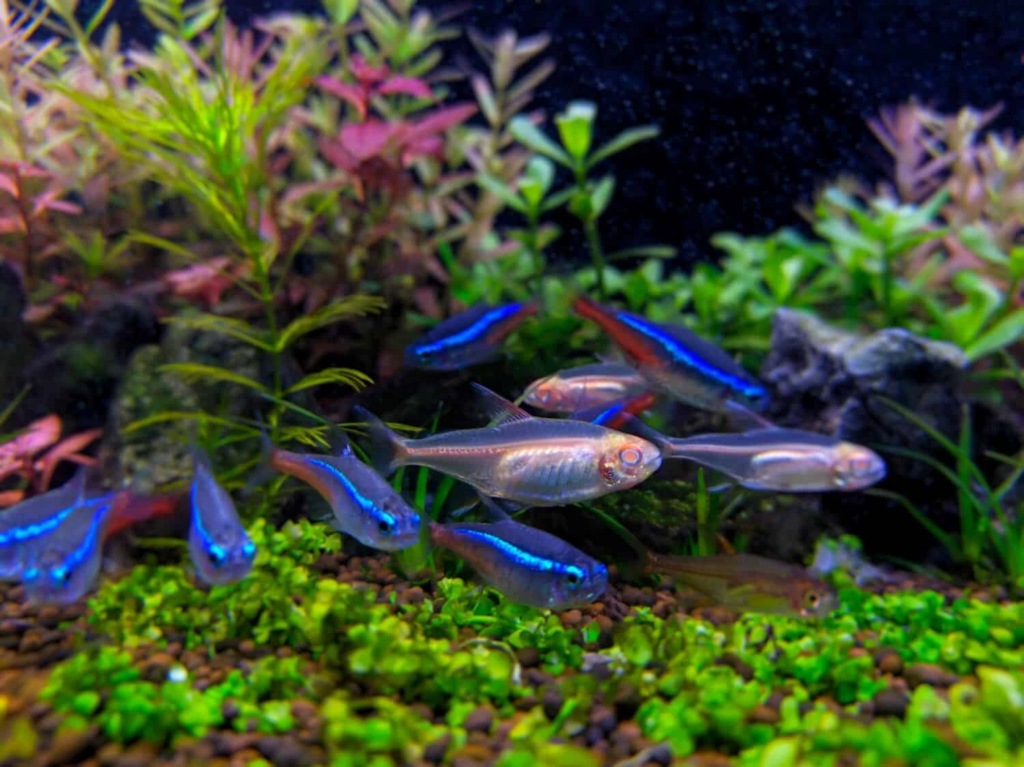
Use this freshwater fish compatibility guide to ensure you choose peaceful tank mates for your Gold Laser Corydoras.
Check if potential tankmates are calm, relatively small, and have the same tank requirements to avoid bullying, outcompeting for food, or getting stressed from poor water conditions.
Species like Neon tetras, Rasboras, and Dwarf cichlids fit these categories.
Author’s Note: Check out The Golden Majesty: A Complete Guide to Gold Angelfish Care for our profile on the cory compatible tankmate, the gold angelfish.
Avoided Species
Avoid aggressive fish like large cichlids or fin-nippers, which may cause stress and outcompete for food and other resources.
Feeding Gold Laser Corydoras: Diet & Nutrition Essentials
As omnivorous pets, a healthy mix of plant-based and animal-based diets is the best food for Gold Laser Corydoras. Read this comprehensive feeding guide to understand their dietary needs and how to maintain this species’ health and color vibrancy through food.
Dietary Needs
Gold Laser Corydoras fish need a high-protein fish diet to develop their muscles and prepare them for spawning during breeding. However, they also need vegetables and occasional treats as supplements to meet other nutritional needs, such as their gut health and scale vibrancy.
For more on feeding your aquatic pets check out The Ultimate Guide to Fish Food: Pros and Cons & Best Choices!
Food Types
- Staples: High-protein sinking pellets with key ingredients like fish meal or spirulina.
- Supplements: Frozen and live or frozen foods like bloodworms and brine shrimp.
- Treats: Blanched vegetables and Algae Wafers.
Feeding Tips
This bottom-feeder fish-feeding guide ensures your pets get all the nutrients they need for full development.
- Feeding Frequency: Feed them staples daily, supplements twice weekly, and treats once a week or bi-weekly, depending on their fiber needs.
- Portion Control: It helps to avoid overfeeding and reduces the risk of poor water quality. Serve only a quantity they can finish within 3 minutes, and always remove uneaten food 24 hours after service.
Breeding Gold Laser Corydoras: How to Successfully Raise a Fry
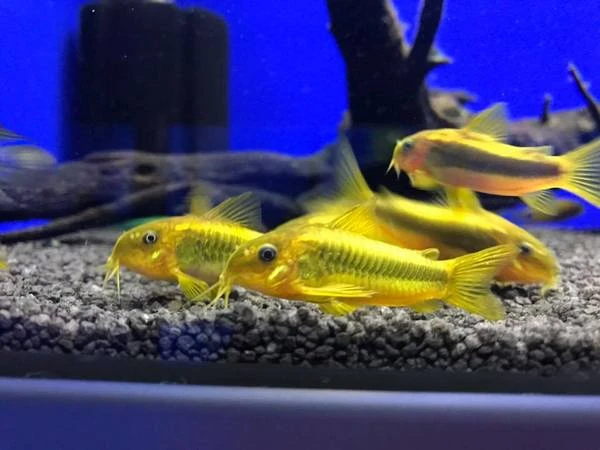
Breeding Gold Laser Corydoras in an aquarium can be a rewarding experience because you’ll get more of this exciting species. So, checkout this section to learn how to breed Gold Laser Corydoras successfully.
Breeding Triggers
Before triggering spawning conditions, follow these freshwater fish breeding tips to ensure your aquarium is up to par.
| Tank Size | 10 – 20 gallons |
| Temperature | 74 – 78℉ |
| pH level | 6.5 – 7.2 |
| Hardness | Soft |
| Diet | High-protein for 2 weeks |
Choose 2:1 female to male ratio for a better chance at successful breeding. When triggering breeding, you must change large water quantities and drop the temperature to the lower recommended value.
Egg Laying
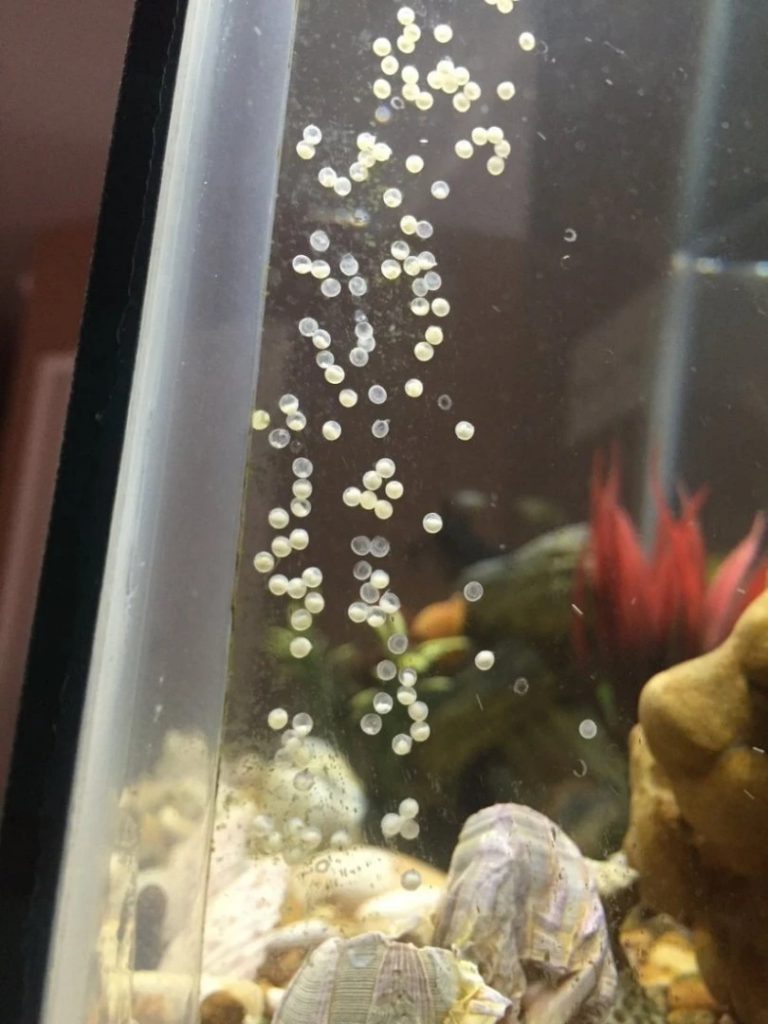
The female Gold Laser Corydoras will hold her eggs in her pelvic fin while the male fertilizes them. After fertilization, females attach their eggs to the tank surfaces, so ensure there’s a large leaf, smooth slate, ceramic, or glass for this purpose.
You must protect the eggs from their parents by removing the adults and keep the environment pristine to prevent fungus growth or contamination.
Fry Care
Within 1 – 3 days, your Gold Laser Corydoras eggs will hatch and fry depending on how the tank gets. Luckily, raising Corydoras fry isn’t as tasking as breeding and egg care.
At this stage, your task is to provide adequate food and monitor the fry for healthy growth. For the first three days, give them infusoria or liquid food. Then, as they develop mouths, you can switch to crushed brine shrimp, microworms, or crushed fry flakes.
Don’t forget to make 20% water changes daily to discourage bacteria growth or infection.
Keeping Gold Laser Corydoras Healthy: Disease Prevention & Care
If you’ve paid attention to the tips in this overview, you’ll agree that it’s Gold Laser Corydoras’ health guide because common health issues in this species often result from poor maintenance.
Common Issues
Common illnesses in bottom-feeders include risks of barbel erosion, bacterial infections, and stress-related diseases. They’re all environmental-related, so with the proper care, you can prevent them.
Preventative Care
The tips in this guide are helpful for preventing freshwater fish diseases. But here’s a quick summary to remind you:
- Regular water changes
- Stable conditions provided in the tank requirements above, and
- Avoiding sharp substrates
Treatment Methods
Whether a pro or beginner, you’re still human and prone to making mistakes. That’s why there are treatments to save your pets.
Always quarantine sick fish first before administering safe medication. Clean the main tank during quarantine and ensure it’s in optimal condition.
Lifespan & Long-Term Care for Gold Laser Corydoras
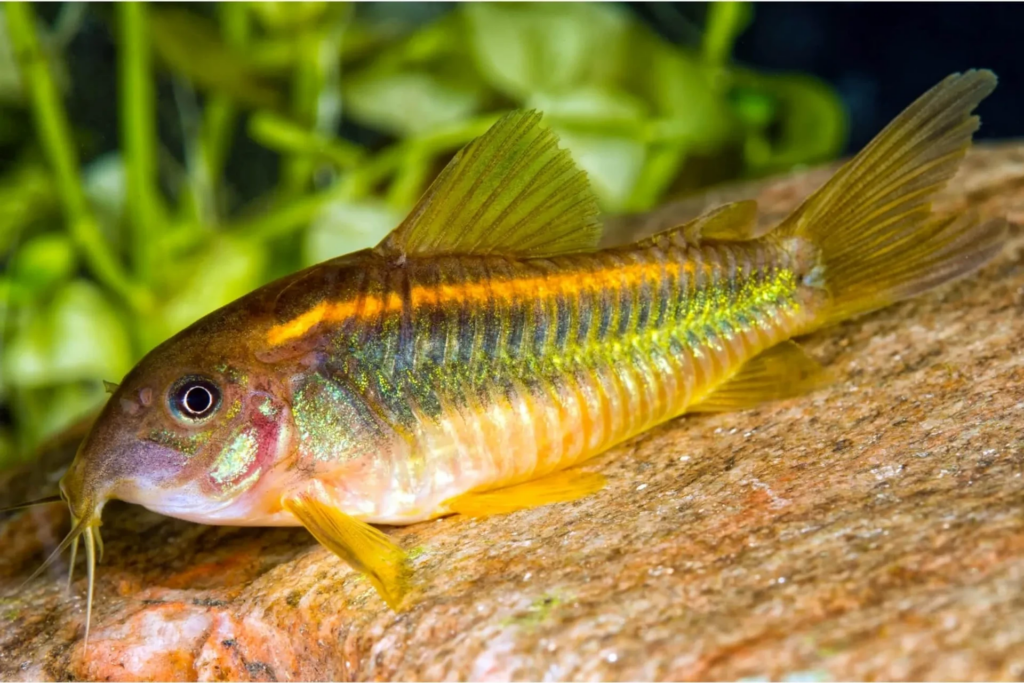
The typical Gold Laser Corydoras lifespan is between 5 – 8 years, but only with proper care, as mismanagement will shorten this possibility. Key factors affecting their lifespan are the parts you must focus on during maintenance, from water quality to diet and stress management.
Lifespan Factors
Freshwater fish longevity tips in this guide include stable conditions, a balanced diet, and the proper companions. In summary, you must do everything possible to guarantee that your Gold Laser Corydoras will live a stress-free and happy life in your aquarium.
Routine Care
Best practices for long-term fish care include periodic tank maintenance and regular health checks. Observe your pets so much that you can pick up on slight changes as signs of illnesses.
Conclusion
There’s no question whether Gold Laser Corydoras are the best bottom-feeders for aquariums because the proof is in the pudding. If you’re still doubting, let’s list some ways Gold Laser Corydoras benefits your aquarium. They’re:
- Peaceful
- Visually compelling in appearance
- Socially active
- Perfect substrate cleaners.
Scroll up for even more on this ideal community tank fish along with recommendations on their care requirements. We’d love to see the result once you complete setting up your Gold Laser Corydoras tank.
Please come back and share your experience in the comment box below. Until then, have fun fishkeeping.

